What do Flight Attendants do?
a day in the life of a flight attendant
If you’re curious about the role of a flight attendant, you might be wondering what exactly these professionals are responsible for. Many people believe that the job of a flight attendant is just to serve meals and coke. You’ll find that it’s a lot more complicated than that! In this blog, we’ll delve into the day-to-day duties and responsibilities of flight attendants. So you’ll have a clear understanding of what flight attendants do and what it takes to succeed in this exciting field.
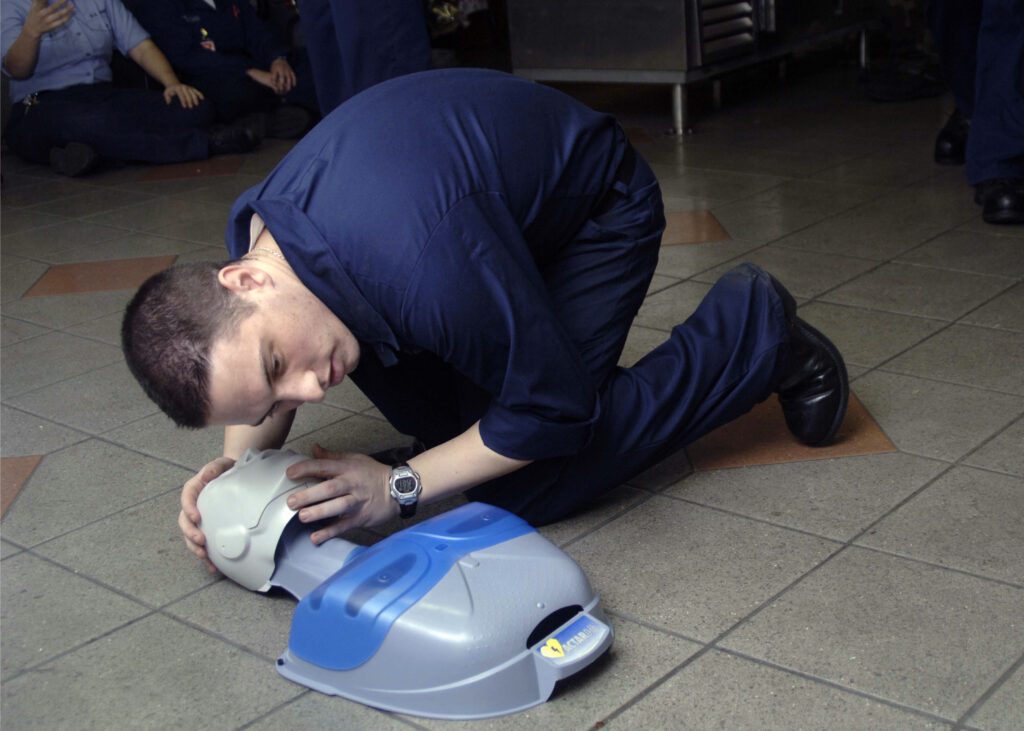
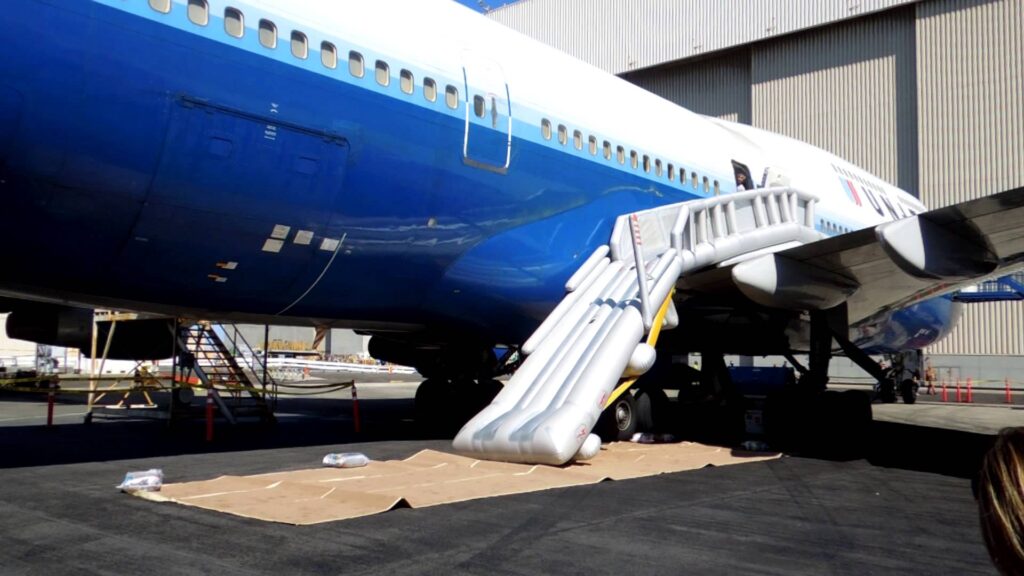
For the safety of the passengers
If an emergency occurs during a flight. The flight attendants have to morph from a smiling waitress to a first responder.
So in an emergency, the flight attendant needs to be able to:
- Help passengers through health emergencies. By using their training in CPR, the defibrillator, using the first aid kit, etc…
- If a plane needs to be evacuated. The flight attendant needs to give clear and concise directions to the passengers. Be able to use the escape slides and get the passengers off the plane in 90 seconds. And the flight attendants being the last ones to leave.
- If there’s an emergency with the plane. The flight crew needs to be the eyes of the pilots and determine what is going on and where in the plane it’s happening
- If there’s a fire on the plane. The flight attendant needs to be able to find and use the fire extinguishers to put out the flames
When you first board the plane, there will be a lot of ground staff that are servicing the plane.
On the inside of the plane, the cabin is being cleaned, lavatory service is doing their job, catering is stocking the galley.
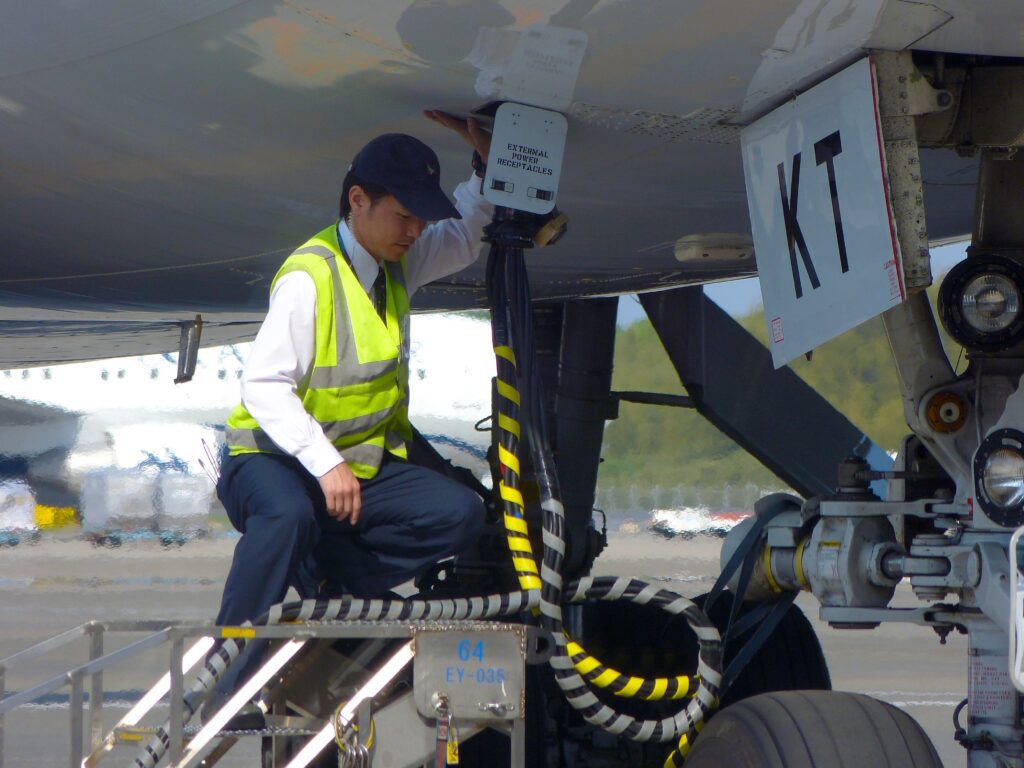
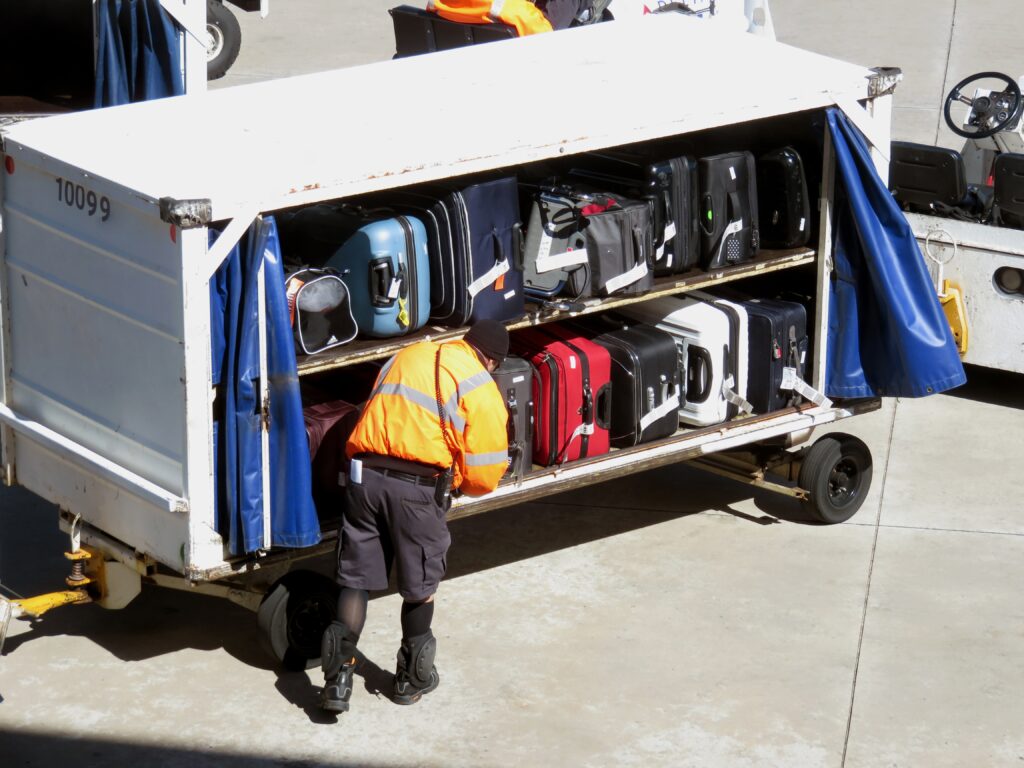



On the outside of the plane. The baggage handlers are off-loading and loading luggage, the plane is being refueled and maintenance is being done. And the pilots do an external inspection to see if there’s any damage to the plane.
The crew’s first job is to prepare the plane for flight. The cabin crew is responsible for the cabin and pilots are responsible for the cockpit.
At this point, you’ll want to check the galley. Check the doors, food carts and coffee makers to make sure nothing moves during takeoff
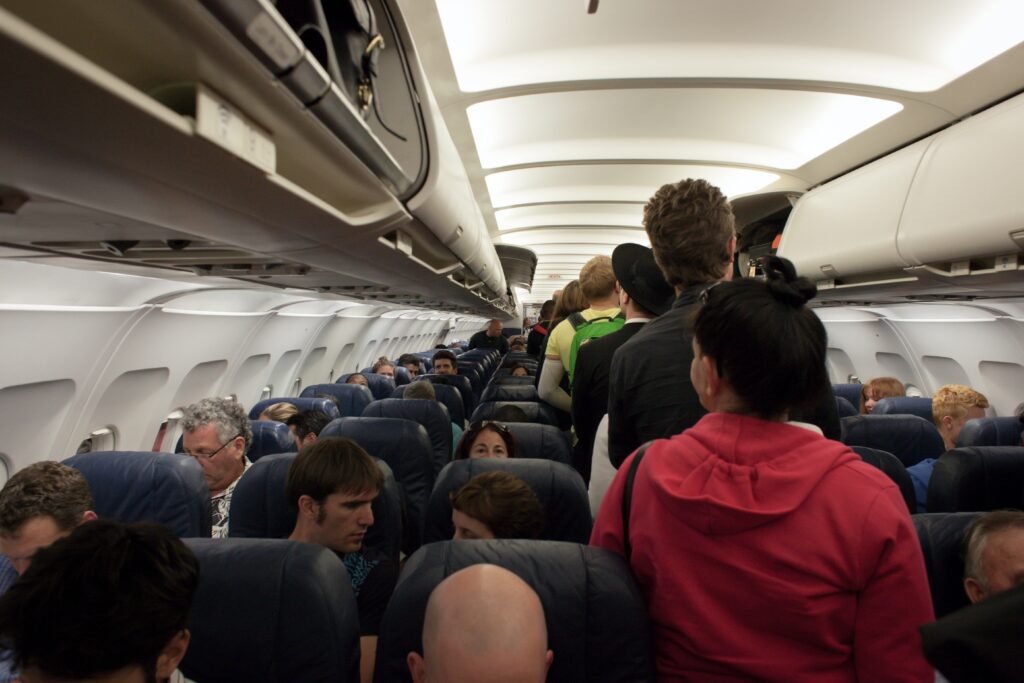



After you welcome the passengers onto the plane and help them find their seats.
Flight attendants will need to:
- Make sure passenger bags and laptops are stowed under the seat ahead of them so they don’t block access to the aisle
- make sure carry on bags are in the overhead compartments. And the compartments are closed and locked securely
- make sure restrooms are empty and doors are closed securely
- check all doors to make sure that they are closed and locked securely
- You and your crew members must check passengers to make sure their seat belts are fastened and seat backs and tray tables are locked in their full upright position
- and finally, tell the captain the passenger head count and that the cabin is secured for take off
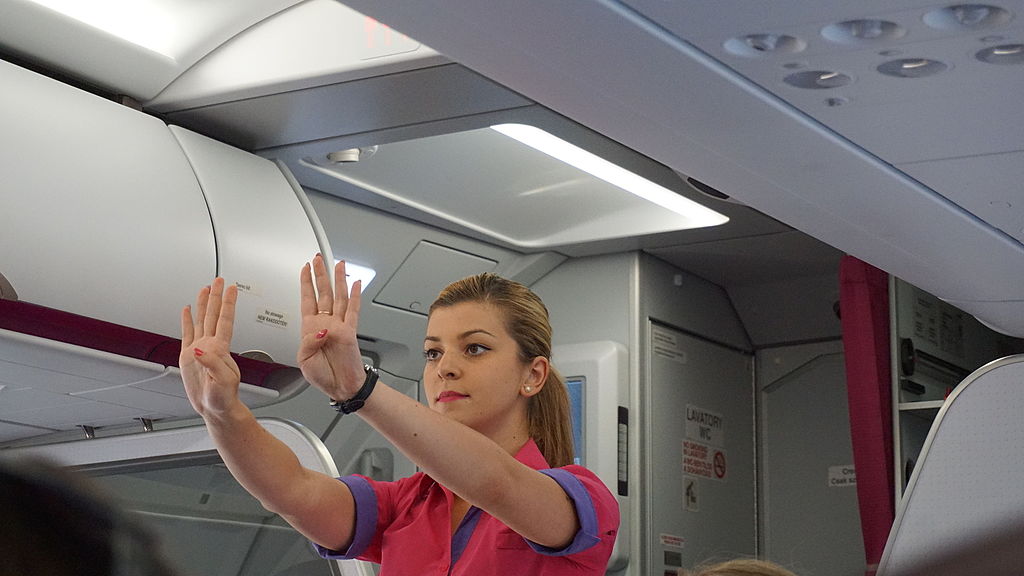



You then either show the safety and emergency procedures, or turn on the video that does this for you.
You then sit down, fasten your own seat belt and chest harness, and wait for take off.




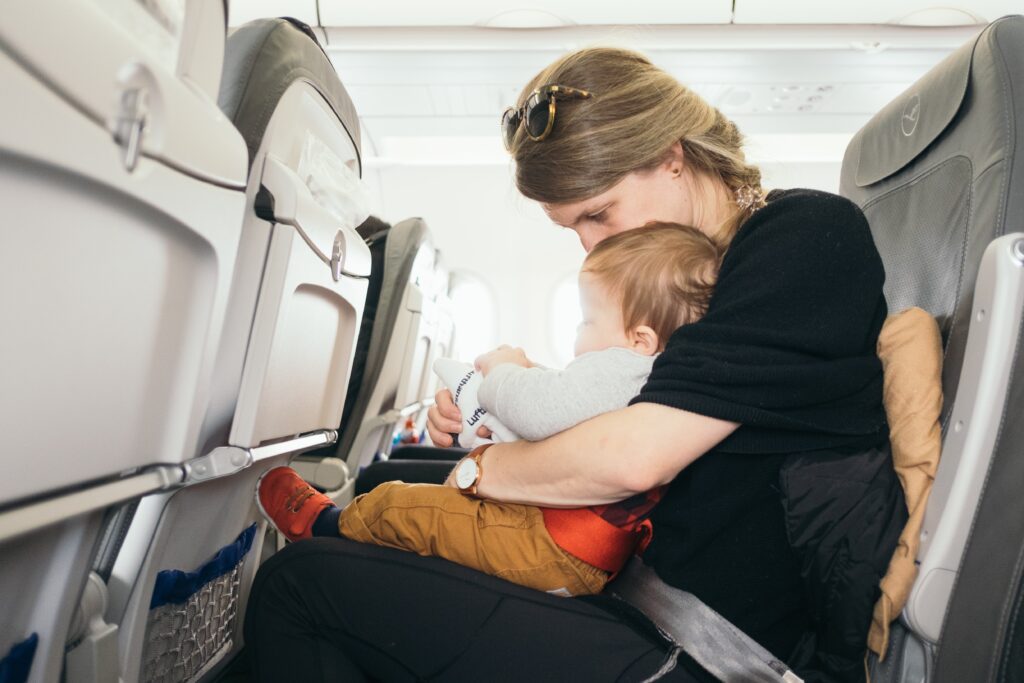














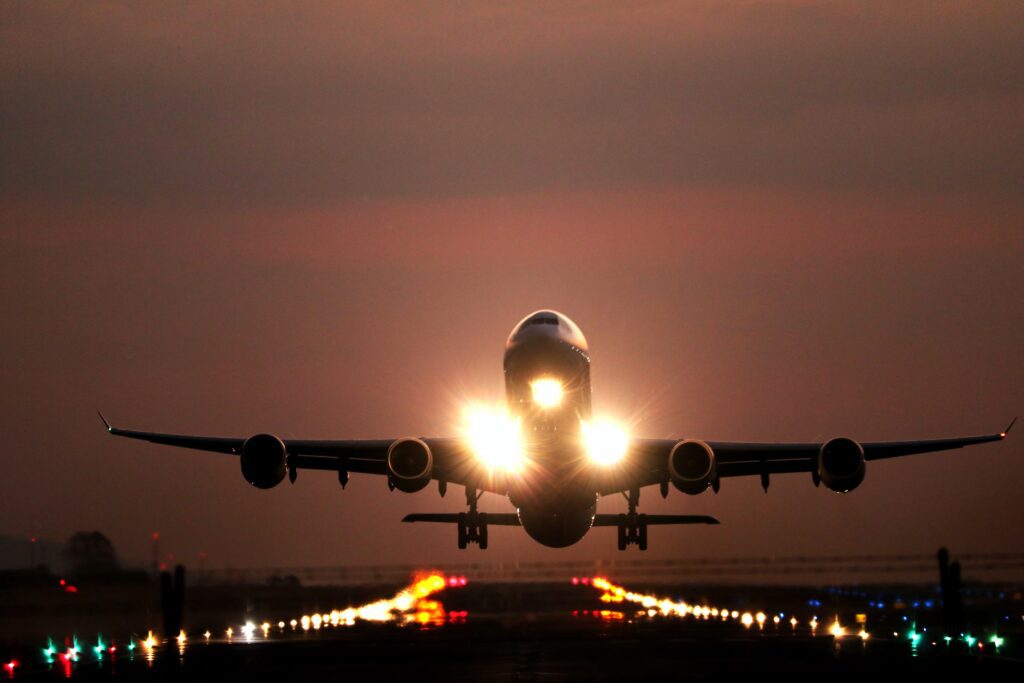


Below is a description of a typical work day for a flight attendant.
When you first board the plane, there will be a lot of ground staff that are servicing the plane.
On the inside of the plane, the cabin is being cleaned, lavatory service is doing their job, catering is stocking the galley.
On the outside of the plane. The baggage handlers are off-loading and loading luggage, the plane is being refueled and maintenance is being done. And the pilots do an external inspection to see if there’s any damage to the plane.
The crew’s first job is to prepare the plane for flight. The cabin crew is responsible for the cabin and pilots are responsible for the cockpit.
At this point, you’ll want to check the galley. Check the doors, food carts and coffee makers to make sure nothing moves during takeoff.
After you welcome the passengers onto the plane and help them find their seats.
Flight attendants will need to:
- Make sure passenger bags and laptops are stowed under the seat ahead of them so they don’t block access to the aisle
- make sure carry on bags are in the overhead compartments. And the compartments are closed and locked securely
- make sure restrooms are empty and doors are closed securely
- check all doors to make sure that they are closed and locked securely
- You and your crew members must check passengers to make sure their seat belts are fastened and seat backs and tray tables are locked in their full upright position
- and finally, tell the captain the passenger head count and that the cabin is secured for take off
You then either show the safety and emergency procedures, or turn on the video that does this for you.
You then sit down, fasten your own seat belt and chest harness, and wait for take off.






















When you first board the plane, there will be a lot of ground staff that are servicing the plane.
On the inside of the plane, the cabin is being cleaned, lavatory service is doing their job, catering is stocking the galley.
On the outside of the plane. The baggage handlers are off-loading and loading luggage, the plane is being refueled and maintenance is being done. And the pilots do an external inspection to see if there’s any damage to the plane.
The crew’s first job is to prepare the plane for flight. The cabin crew is responsible for the cabin and pilots are responsible for the cockpit.
At this point, you’ll want to check the galley. Check the doors, food carts and coffee makers to make sure nothing moves during takeoff
After you welcome the passengers onto the plane and help them find their seats.
Flight attendants will need to:
- Make sure passenger bags and laptops are stowed under the seat ahead of them so they don’t block access to the aisle
- make sure carry on bags are in the overhead compartments. And the compartments are closed and locked securely
- make sure restrooms are empty and doors are closed securely
- check all doors to make sure that they are closed and locked securely
- You and your crew members must check passengers to make sure their seat belts are fastened and seat backs and tray tables are locked in their full upright position
- and finally, tell the captain the passenger head count and that the cabin is secured for take off
You then either show the safety and emergency procedures, or turn on the video that does this for you.
You then sit down, fasten your own seat belt and chest harness, and wait for take off.
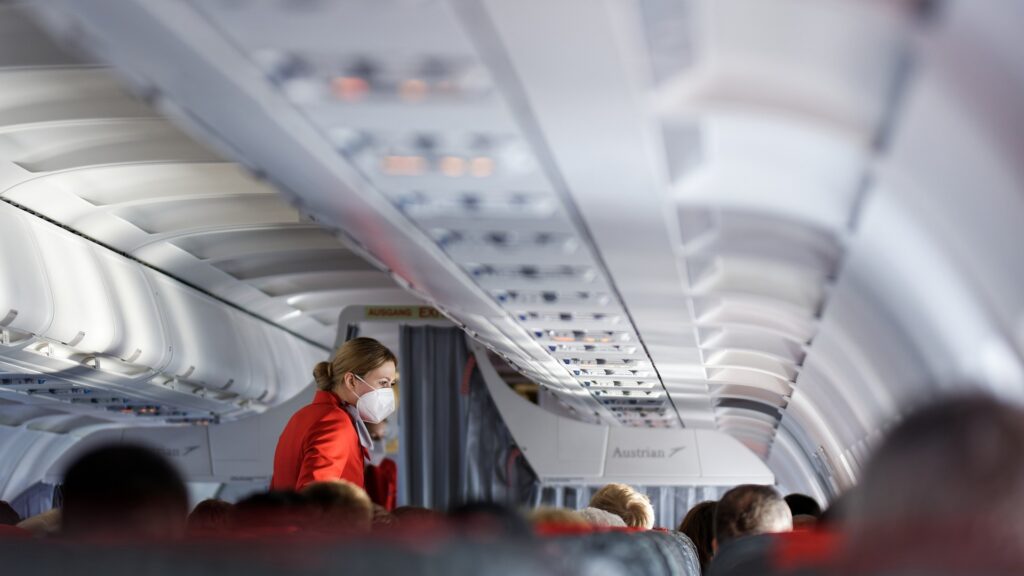

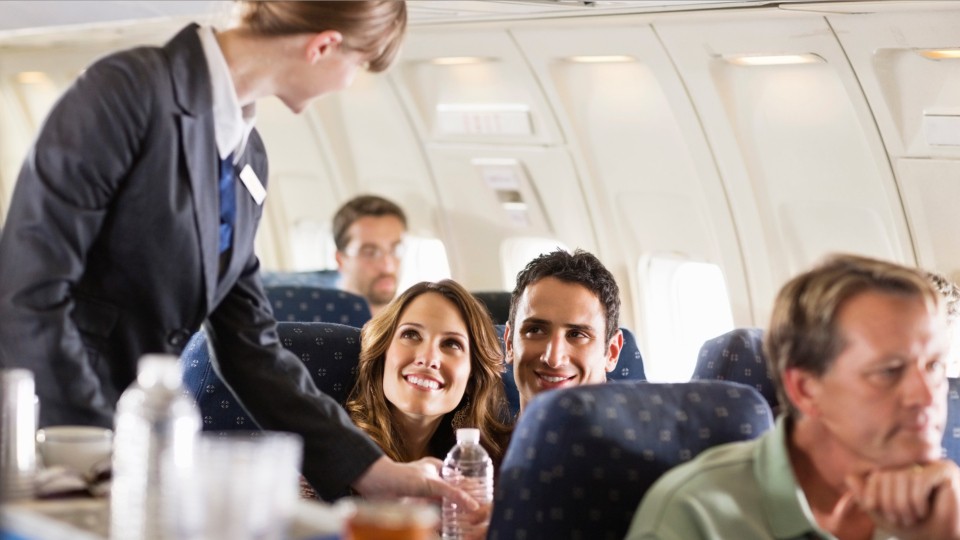

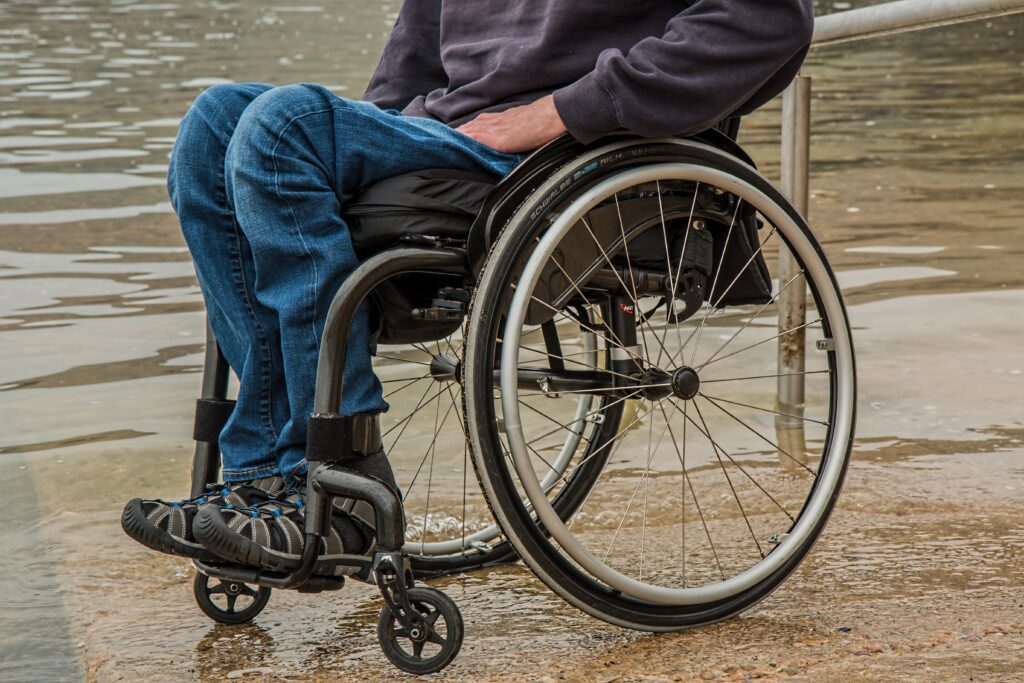

A flight attendant needs to provide passengers with professional and efficient customer service. And at the same time, ensure passengers are provided the maximum level of safety and comfort.
The flight attendant does this by creating a relaxed and friendly atmosphere in the cabin and serving refreshments, lunches, and snacks.
During a flight, flight attendants:
- have to deal with unruly passengers
- They have to be able to resolve conflicts between passengers
- They have to be able to prepare and serve meals
- Manage the usage of the washrooms, if required
- They have to know how to use the emergency equipment
- They have to know how to inspect the emergency equipment
- The flight attendant needs to help passengers with special needs. Such as disabled customers. By helping with food handling, conducting individual safety briefings and by transporting them to and from the in-flight wheelchair when applicable.
- Assisting passengers during turbulence
- Ensure passenger compliance with all safety requirements and applicable Federal Aviation Regulations.
- And they have to give outstanding customer service during the flight
during a flight, flight attendants:
- have to deal with unruly passengers
- They have to be able to resolve conflicts between passengers
- They have to be able to prepare and serve meals
- Manage the usage of the washrooms, if required
- They have to know how to use the emergency equipment
- They have to know how to inspect the emergency equipment
- The flight attendant needs to help passengers with special needs. Such as disabled customers. By helping with food handling, conducting individual safety briefings and by transporting them to and from the in-flight wheelchair when applicable.
- Assisting passengers during turbulence
- Ensure passenger compliance with all safety requirements and applicable Federal Aviation Regulations.
- And they have to give outstanding customer service during the flight
LANDING
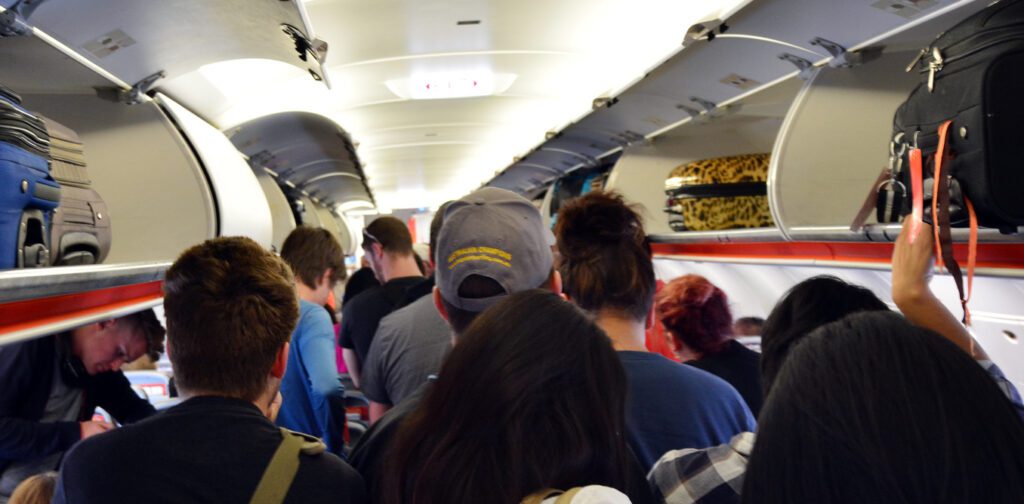



You de-plane the passengers.
Then you check the lavatories just in case someone is left inside unconscious.
You check the cabin for any belongings left by passengers.
Once you’re sure all the passengers are out of the plane. The cabin crew gives the captain a cabin clear signal. Once that is done, you check the cabin for any damage. If any damage is found, you make sure it gets written in CCL (Cabin Checks Logbook).
It’s possible you may have to wait for the security department to check the plane before you exit.




During this time the pilots do an external inspection to see that there’s no damage to the aircraft. If there are any problems, the pilots have to ensure the engineering team knows what they should be looking for.
If it’s the last flight of the day and the aircraft has no damage. The captain then signs off the tech log and hands the aircraft over to the maintenance engineers.
If the plane is being immediately taken over by the next set of crew members. You relay any information about the aircraft to them. You don’t just walk away without telling anyone.
Once the airplane is handed over, your job is done. You have no other obligations until the start of our next scheduled work period.
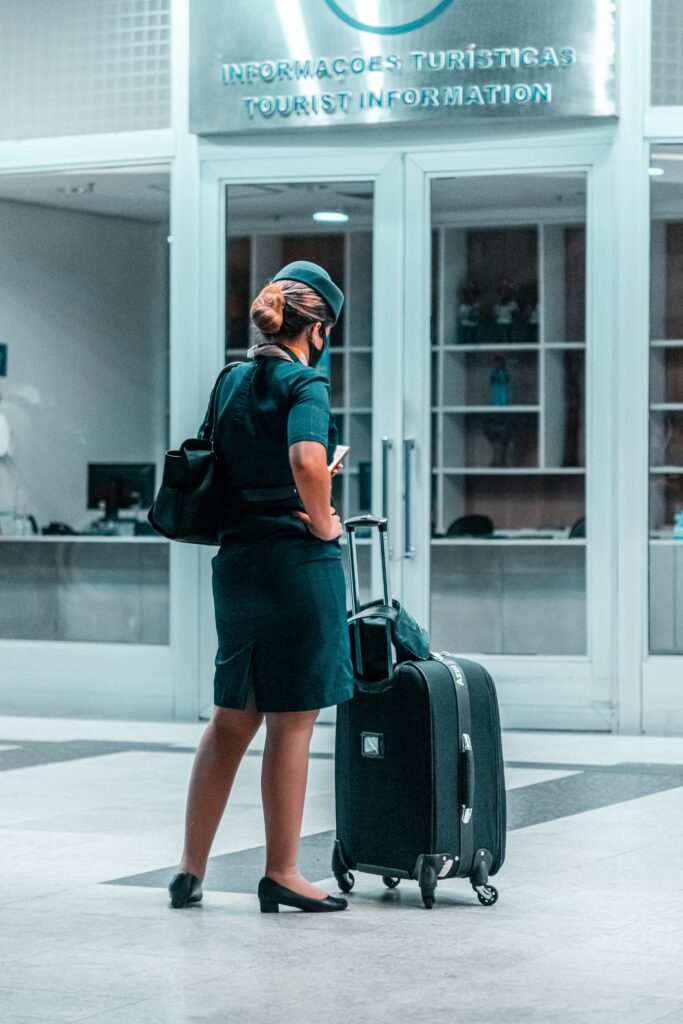



If that was your last flight of the day, and everything goes according to plan, you either travel to a hotel or go home.
You then collect our bags and personal belongings and leave the airplane.
You may get home before your passengers. That is because flight attendants usually leave through the arrival gate and already have their luggage.
In a typical month you can work 21–22 days and stay 5 to 10 nights in hotels.








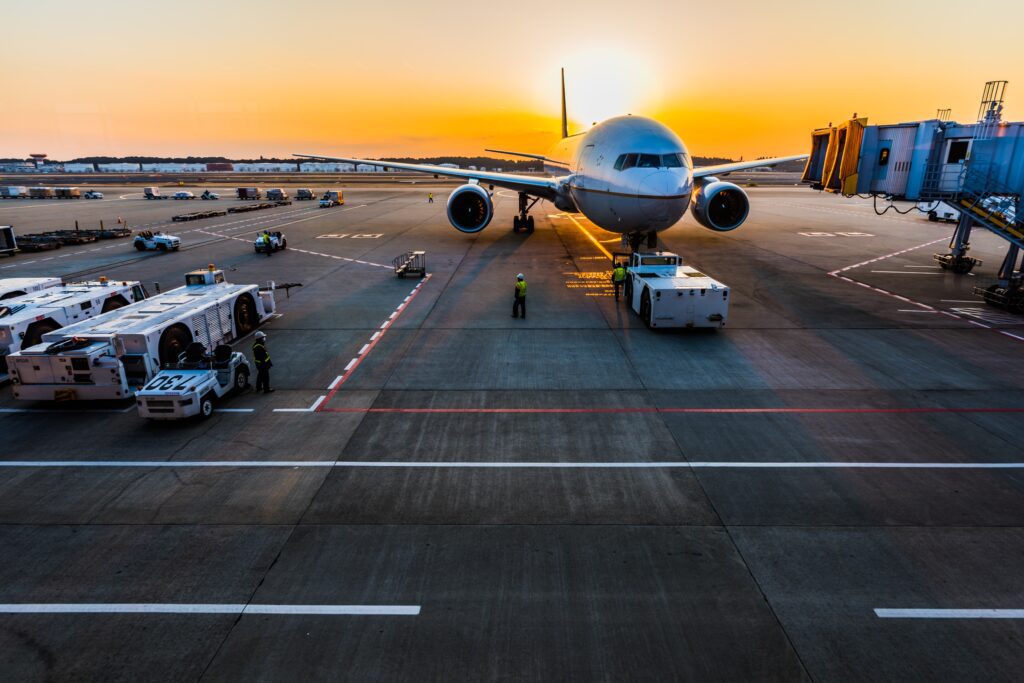









LANDING
You de-plane the passengers. Then you check the lavatories just in case someone is left inside unconscious.
You check the cabin for any belongings left by passengers.
Once you’re sure all the passengers are out of the plane. The cabin crew gives the captain a cabin clear signal. Once that is done, you check the cabin for any damage. If any damage is found, you make sure it gets written in CCL (Cabin Checks Logbook).
It’s possible you may have to wait for the security department to check the plane before you exit.
During this time the pilots do an external inspection to see that there’s no damage to the aircraft. If there are any problems, the pilots have to ensure the engineering team knows what they should be looking for.
If it’s the last flight of the day and the aircraft has no damage. The captain then signs off the tech log and hands the aircraft over to the maintenance engineers.
If the plane is being immediately taken over by the next set of crew members. You relay any information about the aircraft to them. You don’t just walk away without telling anyone.
Once the airplane is handed over, your job is done. You have no other obligations until the start of our next scheduled work period.
If that was your last flight of the day, and everything goes according to plan, you either travel to a hotel or go home.
You then collect our bags and personal belongings and leave the airplane.
You may get home before your passengers. That is because flight attendants usually leave through the arrival gate and already have their luggage.
In a typical month you can work 21–22 days and stay 5 to 10 nights in hotels.


















You de-plane the passengers. Then you check the lavatories just in case someone is left inside unconscious.
You check the cabin for any belongings left by passengers.
Once you’re sure all the passengers are out of the plane. The cabin crew gives the captain a cabin clear signal. Once that is done, you check the cabin for any damage. If any damage is found, you make sure it gets written in CCL (Cabin Checks Logbook).
It’s possible you may have to wait for the security department to check the plane before you exit.
During this time the pilots do an external inspection to see that there’s no damage to the aircraft. If there are any problems, the pilots have to ensure the engineering team knows what they should be looking for.
If it’s the last flight of the day and the aircraft has no damage. The captain then signs off the tech log and hands the aircraft over to the maintenance engineers.
If the plane is being immediately taken over by the next set of crew members. You relay any information about the aircraft to them. You don’t just walk away without telling anyone.
Once the airplane is handed over, your job is done. You have no other obligations until the start of our next scheduled work period.
If that was your last flight of the day, and everything goes according to plan, you either travel to a hotel or go home.
You then collect our bags and personal belongings and leave the airplane.
You may get home before your passengers. That is because flight attendants usually leave through the arrival gate and already have their luggage.
In a typical month you can work 21–22 days and stay 5 to 10 nights in hotels.
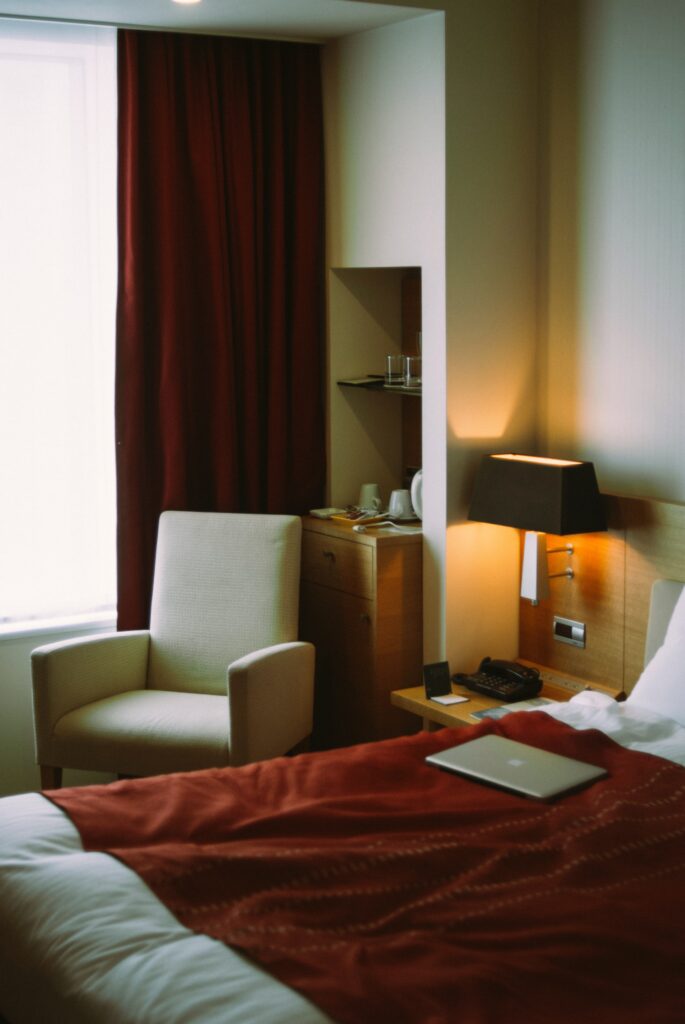



Flight attendants also travel to very interesting locations around the world…
Depending on the airline that you’re working for, and your seniority. It is very possible that you could end up flying to different countries in the world. And during your layover, Having enough time to tour those countries.
Because you would be touring during your layover. The airline would be paying for your hotel and most likely your meals.
So being a flight attendant can be an inexpensive way of seeing the exotic places in the world.







Even though you may only have a couple of days at your destination. Over time (months or years) you should be able to see destinations such as Paris in Singapore.
Depending on the airline that you’re working for, and your seniority. It is very possible that you could end up flying to different countries in the world. And during your layover, Having enough time to tour those countries.
Because you would be touring during your layover. The airline would be paying for your hotel and most likely your meals.
So being a flight attendant can be an inexpensive way of seeing the exotic places in the world.
Even though you may only have a couple of days at your destination. Over time (months or years) you should be able to see destinations such as Paris in Singapore.







Are You Ready to Become a Flight Attendant?
Still wondering how to become a flight attendant?
Then check out our post: How To Become A Flight Attendant – The Ultimate Guide!
Or you can check out the next post in the series, the Flight attendant interview process. Where we have written a 4 part article about the entire process. This includes a description on every step of the interview process.
- The group interview
- The in person interview
- An article on how to stand out in the crowd
- And an article on what questions you can expect during the interview and some tips on how to answer them